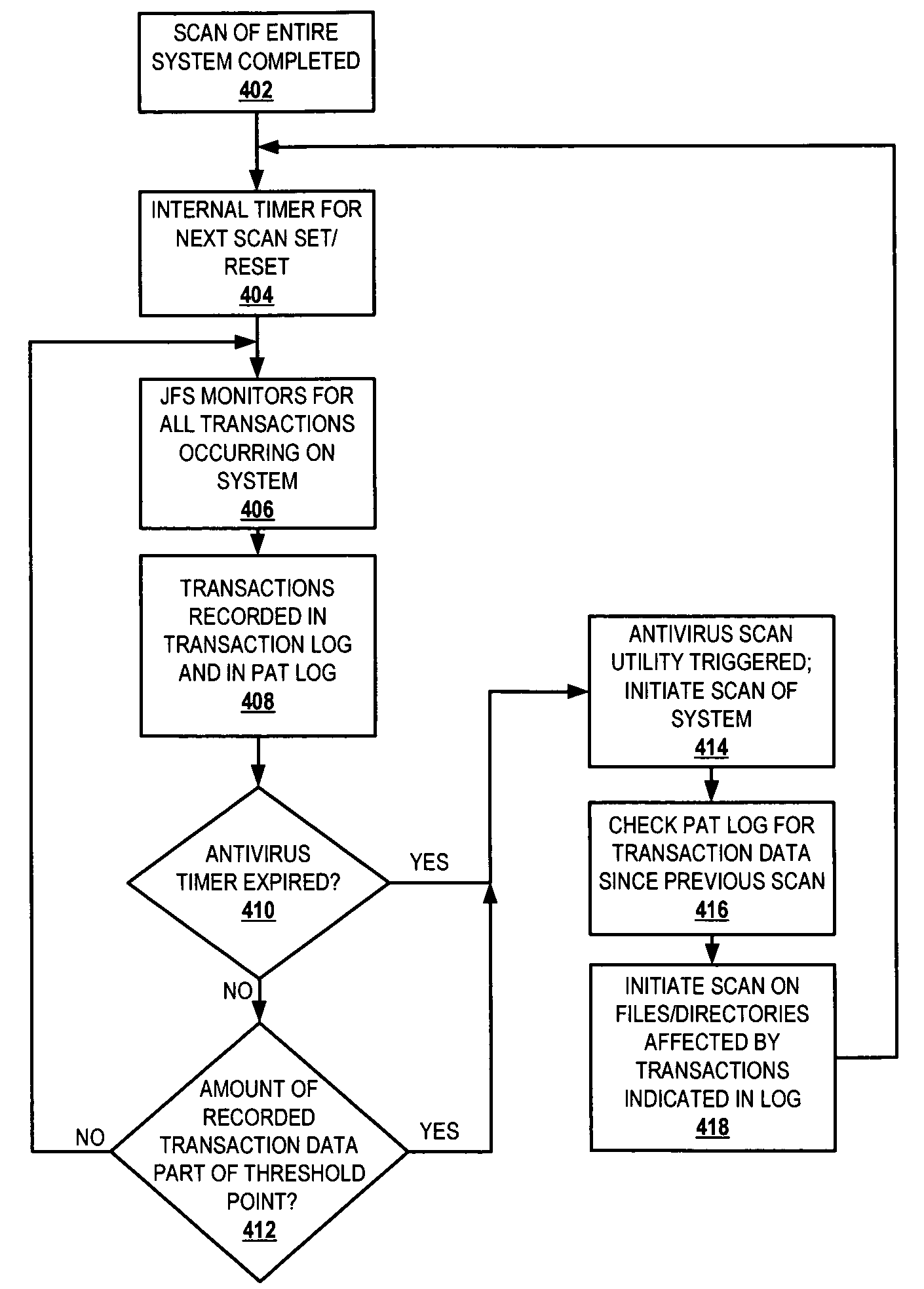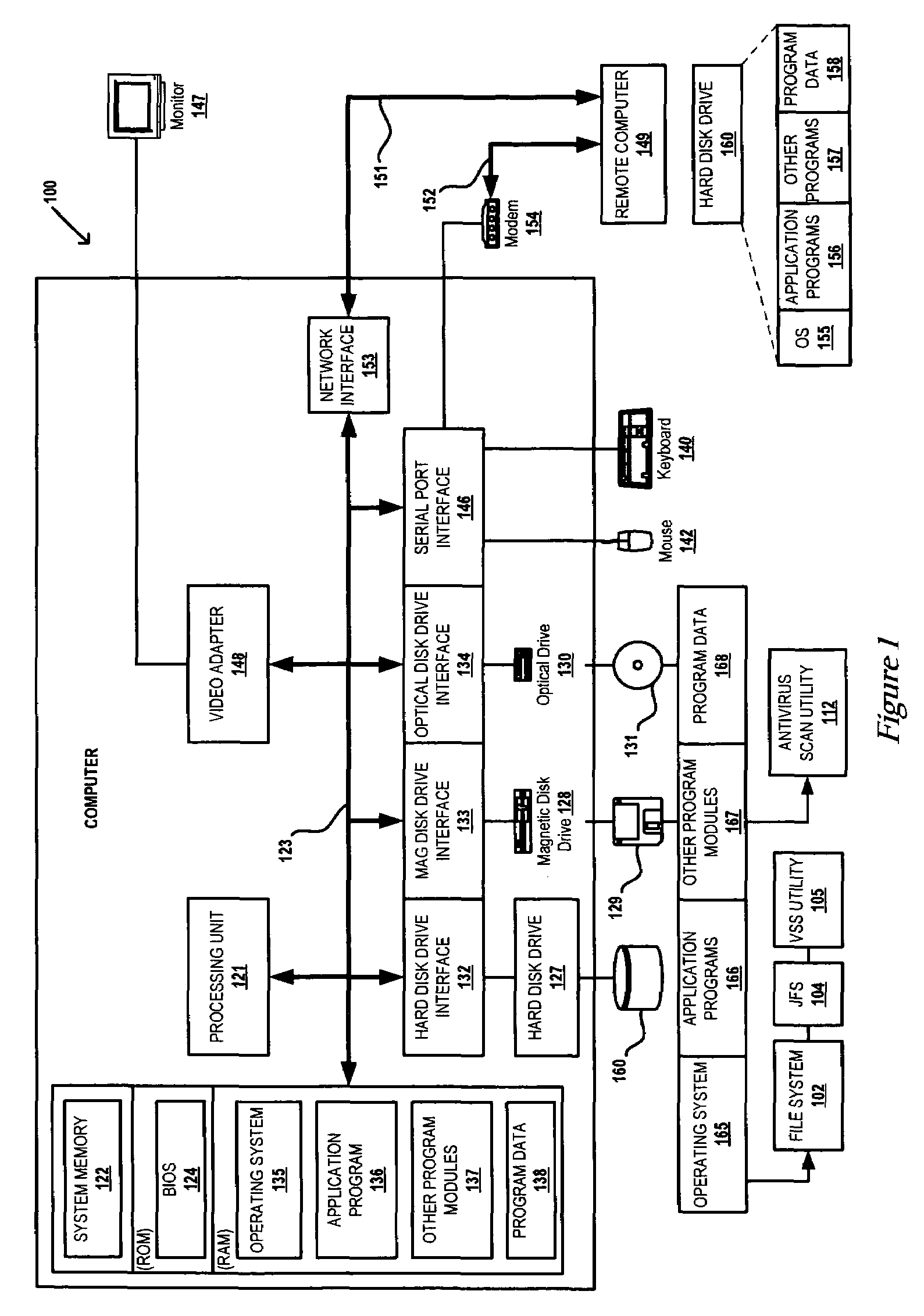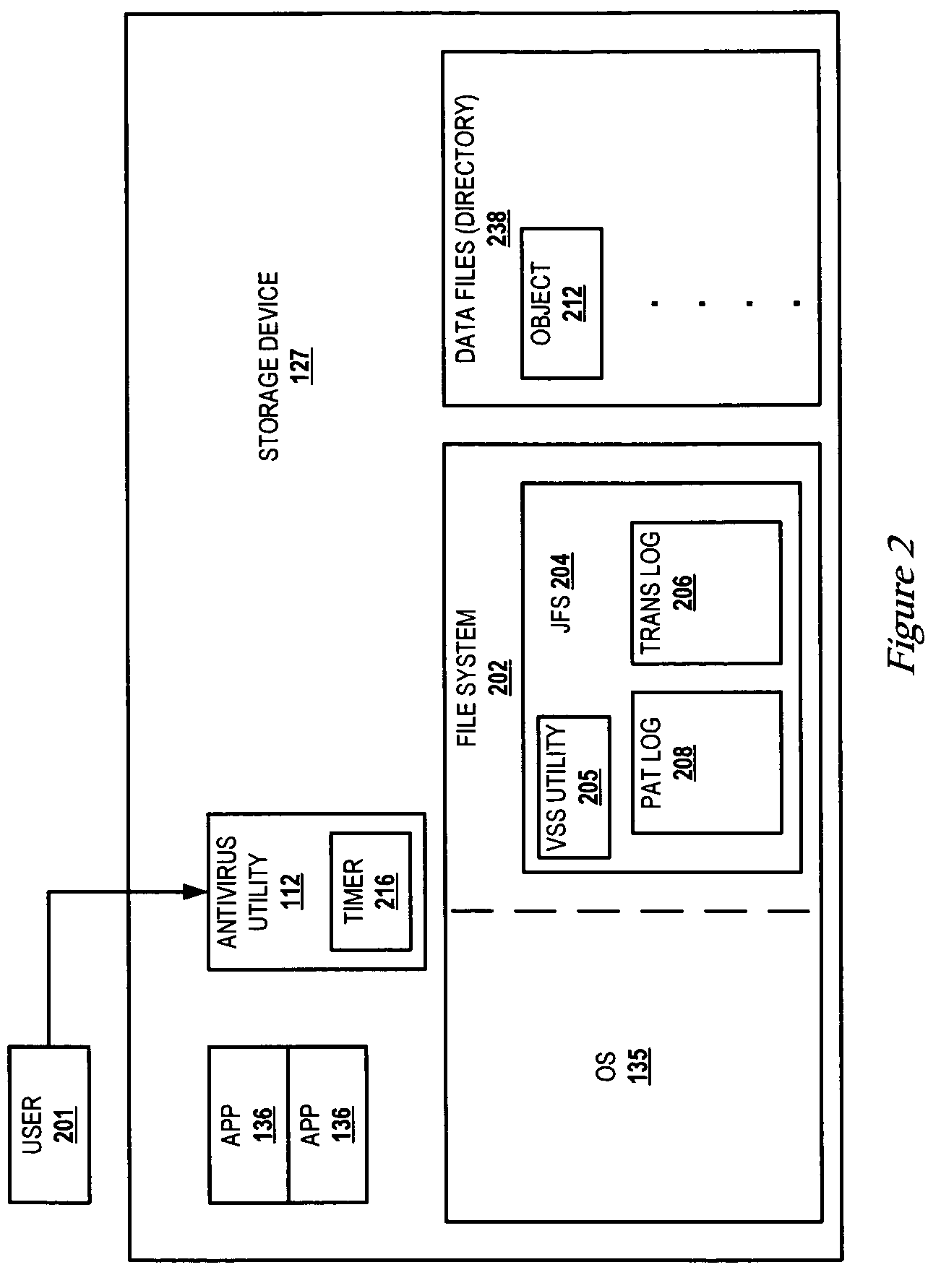Method/system to speed up antivirus scans using a journal file system
a journal file system and virus scanning technology, applied in the field of computer systems, can solve the problems of reducing the speed of antivirus scans, unable to achieve proper technical definition of malicious code or hostile code, and reducing the length of time, so as to enhance the current jfs function.
- Summary
- Abstract
- Description
- Claims
- Application Information
AI Technical Summary
Benefits of technology
Problems solved by technology
Method used
Image
Examples
Embodiment Construction
[0022]The present invention provides a method and system that utilizes the functionality of journaling filesystems (JFS) to reduce the length of time required to complete antivirus software scans (or virus scans) on a computer system while ensuring protection against malicious software. The JFS designer / programmer enhances current JFS functions by adding a virus scanning support (VSS) utility. The VSS utility utilizes a low level log, referred to as a persistent antivirus transaction (PAT) log that is assigned by the JFS to store a history of changes since a previous virus scan operation. The designer / programmer further modifies the filesystem of the operating system (OS) to support restricted user-level access to the PAT log, and to make the log immune from normal purge operations by the JFS for completed operations. The history of operations involving data, files, and directories is maintained in the PAT log and cannot be circumvented without driver level access. A virus that chan...
PUM
 Login to View More
Login to View More Abstract
Description
Claims
Application Information
 Login to View More
Login to View More - R&D
- Intellectual Property
- Life Sciences
- Materials
- Tech Scout
- Unparalleled Data Quality
- Higher Quality Content
- 60% Fewer Hallucinations
Browse by: Latest US Patents, China's latest patents, Technical Efficacy Thesaurus, Application Domain, Technology Topic, Popular Technical Reports.
© 2025 PatSnap. All rights reserved.Legal|Privacy policy|Modern Slavery Act Transparency Statement|Sitemap|About US| Contact US: help@patsnap.com



